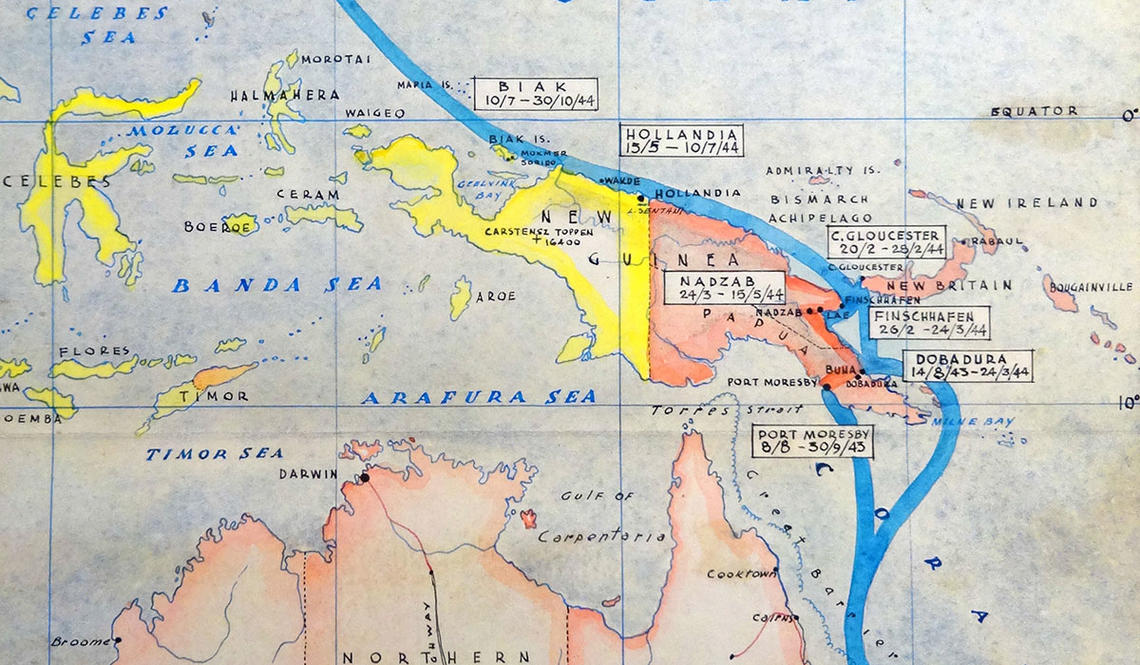
World War II records are mostly monochrome – reams of typescript, dense block paragraphs, and black-and-white photos. But in the archives of the Fifth Air Force, which fought in New Guinea and the Philippines, deep in a stack of reports for the 475th Fighter Group, there is a bright, unexpected swathe of color.
Brilliant watercolor images, report covers, maps, and charts stand out. The records become modern-day illuminated manuscripts. They convey the same data as typed squadron reports, but they do it with color, symbols, landscapes, maps, and elegant hand-lettered captions. They look like PowerPoint slides prepared by medieval monks. And just as medieval scriveners worked anonymously, so only once do Fifth Air Force records name the artist: 2nd Lt. Henry C. Toll, who flew a P-38 Lightning in the 432nd Fighter Squadron and graduated with the Class of 1942.
During his time at Princeton, Toll was editor of The Tiger. He drew the school mascot with a cartoonist’s esprit, creating the “Toll Tiger” and the Class of ’42 emblem “Tat the Tiger.” After graduating, Toll became a pilot with the Fifth Air Force. He named his P-38 Lightning “Strictly Laffs!!” He shot down three Japanese fighters, and he came home with the Air Medal and a Distinguished Flying Cross. Just as he had inked score covers for the Triangle Club, Toll illustrated monthly reports for the 475th Fighter Group, “Satan’s Angels.”
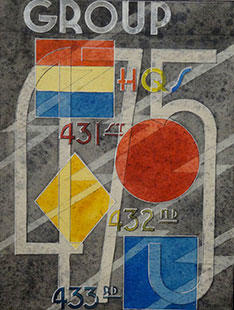
For the March 1944 group history cover, Toll painted an homage to Mondrian – a study in geometric shapes and bold primary colors, with slim art deco lettering. It was an artist’s joke to paint like Mondrian in New Guinea, amid war, heat, rain, mud, and mosquitoes. It was a pilot’s joke to use a red circle for the 431st Fighter Squadron, a yellow diamond for the 432nd Fighter Squadron, and a blue square for the 433rd Squadron – these were the colors with which these squadrons trimmed their warplanes.
In Satan’s Angels, other squadrons emblazoned their planes with pictures of frowning devils. For his own 432nd Squadron, Toll drew a light-hearted coat-of-arms: Uncle Sam riding a lightning bolt (for the P-38 Lightning), superimposed on a green four-leaf clover (the squadron’s radio call sign was Clover), all framed within a yellow diamond (to match Clover Squadron’s yellow propeller-spinners).
In April 1944, Toll flew airstrikes against the Japanese airstrips at Hollandia. Back at base, he drew a map that tallied up missions flown by the 475th. In May, Toll graced the history cover with a landscape. Its background was the coast at Lae (with a bombed-out Japanese transport, a local landmark); the foreground showed the group’s bivouac, at the tent-city airbase of Nadzab. In October, when the 475th Fighter Group landed in the Philippines, Toll turned to heraldry – the coat-of-arms of the Philippine Commonwealth.
Instead of writing letters home, Toll mailed daily cartoons of camp life to his wife, Edith. In 1987, he collected these pen-and-ink vignettes in Tropic Lightning, a remarkable war memoir. After the war, Toll made his career as an architect in the Southwest and worked for the Bureau of Indian Affairs. His paintings of Hopi and Zuni Pueblo ceremonies (and, of course, the Toll Tigers) are well known in the Princeton community. He died in 2005 at age 84.
For 70 years, Toll’s illuminated manuscripts have gone unseen, encountered only by researchers paging through the files at Maxwell Air Force Base, outside Montgomery, Ala. Yet they deserve the same acclaim as his other work, for they reflect a talent that turned humdrum military paperwork into something vivid and marvelous.
Allen Boyer, a lawyer and historian in New York City, encountered Henry Toll’s wartime artwork while researching his own father’s service in the Fifth Air Force.
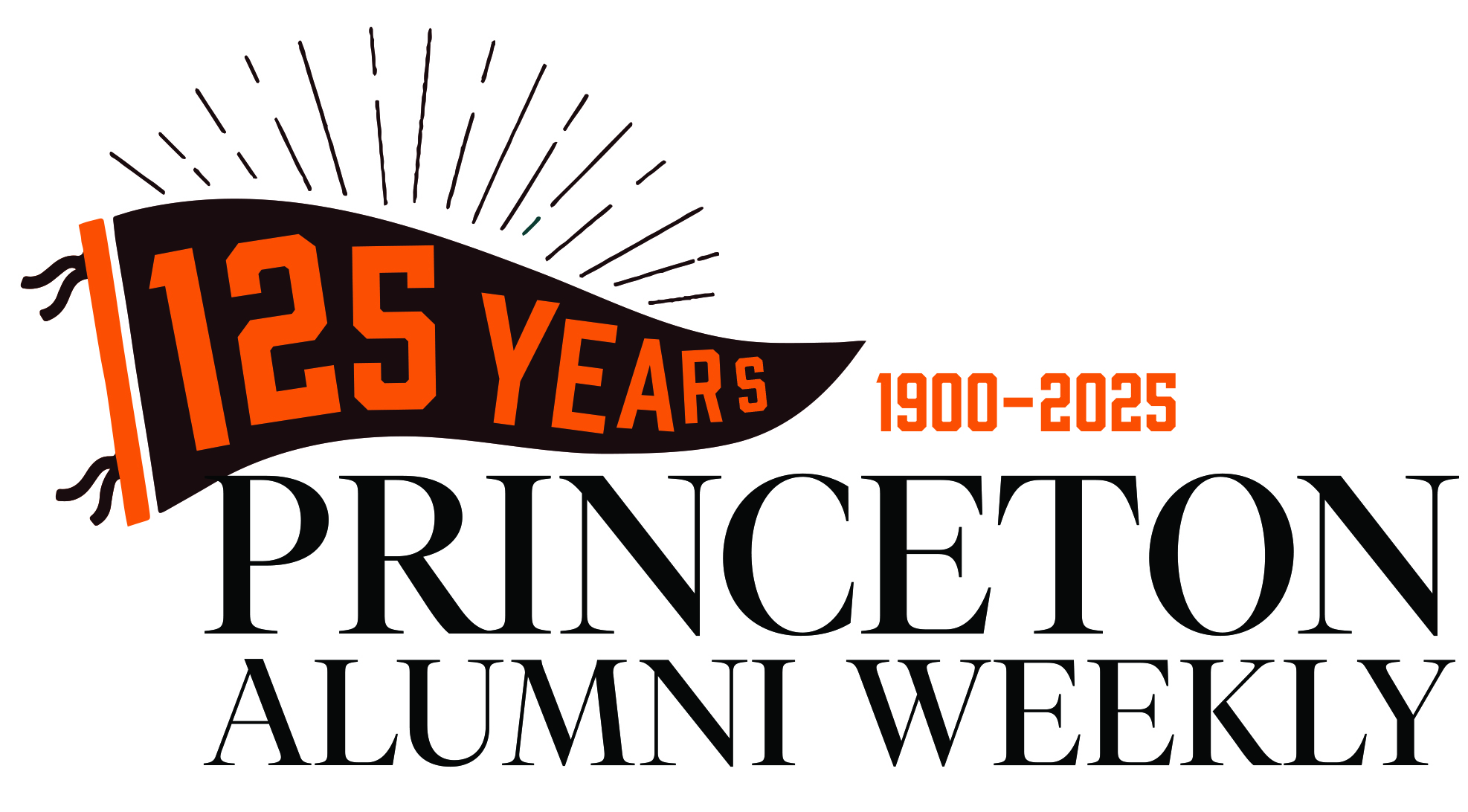

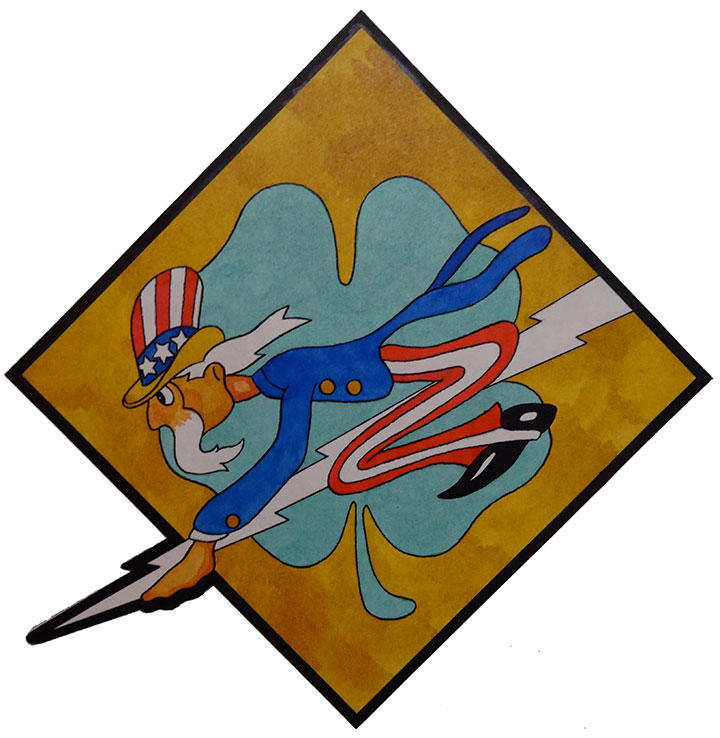

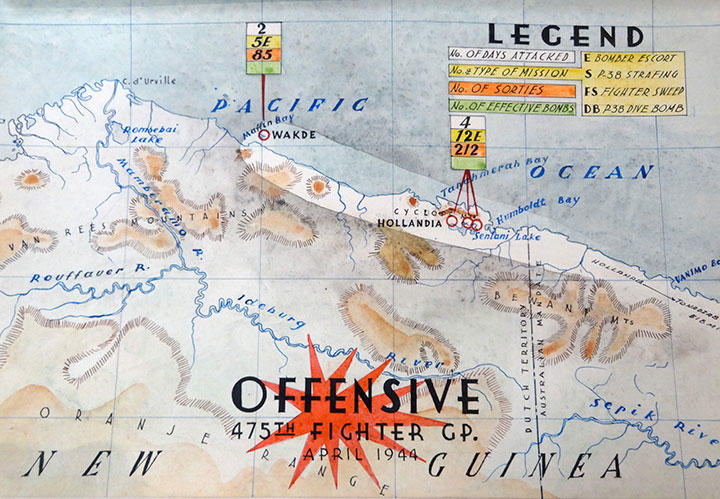









5 Responses
Mac Tiger-Toll
3 Years AgoHenry Toll Paintings
I was delighted to find this article as Henry Toll ’42 was my father. I had no idea of some of the types of artwork that he did while he was with the 432nd. The Uncle Sam insignia is on a hangar in an Air Force museum in California. ( I apologize that I don’t know the name of that museum.)
I have a large collection of my father’s paintings from the Rio Grande pueblos and the Zia, Apache, Zuñi, Hopi, and Navajo Nations. I have some of my father’s old artwork. I would be delighted to donate some of these things to Princeton.
Chip Toll
9 Years AgoThank you for posting these...
Thank you for posting these images, Mr. Boyer! Henry was my uncle. I have a copy of his book “Tropic Lightning” and one of his paintings from the Zuni Pueblo in N.M. - but I didn’t know Henry had created such interesting and informative artwork while serving in the Pacific. I would be interested in finding out if there is more of his work at Maxwell AFB.
Best regards,
Kerry Brown ’74
9 Years AgoGreat article. Beautiful art...
Great article. Beautiful artwork by Mr. Toll. He and your Dad probably provided support to my father’s efforts on the ground with the 43rd Infantry Division, which fought in the Philippines and New Guinea.
Richard Chenoweth
9 Years AgoFascinating story...
Fascinating story, Mr. Boyer! Thank you.
Allen D. Boyer
9 Years AgoThanks! It was something...
Thanks! It was something unexpected to find those artworks, and I’m glad to be able to get them seen more broadly.